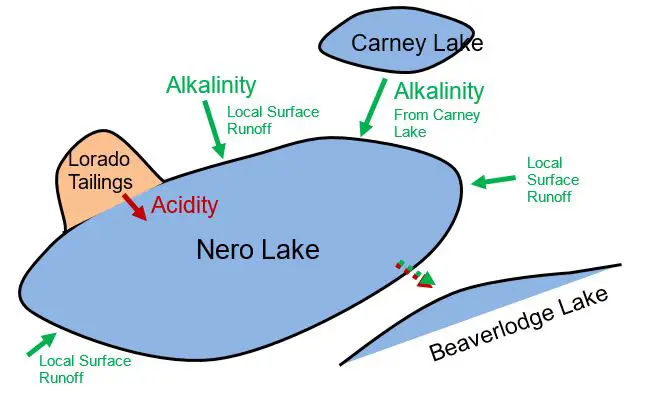The Lorado site is an abandoned uranium milling operation located on the western shore of Nero Lake in northern Saskatchewan. The mill was constructed in 1957 and operated until 1960. Tailings and acidic waste produced by the milling operation were deposited near the western shore of Nero Lake and some tailings were submerged in the lake. Although not abandoned, the Lorado site was neglected as ownership changed hands.
In 2007, responsibility was transferred to the Saskatchewan Ministry of Economy, with funds for site remediation. The ministry retained the Saskatchewan Research Council to develop a Risk Reduction Plan and an Environmental Impact Statement. The goal: to reduce risk from acid contamination at the site to human, terrestrial and aquatic populations.
The plan included: covering surface tailings in-place, and treating Nero Lake by batch neutralisation of the lake water using lime. SRC retained SRK Consulting to design the tailings cover, carry out a pilot-scale trial to test in-situ batch treatment and ultimately design the fullscale water treatment system for Nero Lake. In addition, SRK developed a water and load balance model for determining whether acidity from the historical tailings would necessitate neutralising treatments in the future. The purpose of the pilot trial was to inform the full scale design by:
- Determining the lime dose required to neutralise the lake water
- Assessing the effect on water quality in Nero Lake
- Evaluating the long-term stability of the precipitated solids
- Evaluating the effect of mixing on lime utilisation
The pilot trial was carried out using closed-bottom limnocorrals (large, impermeable plastic bags) submerged in the lake. A circulation pump delivered water from the bottom of the limnocorrals to the shore where lime slurry was injected inline before flowing back to the surface of the limnocorrals. Precipitates formed in the treatment process were collected from the bottom of the limnocorrals and analysed.
Results from the pilot trial were used as a basis for designing and implementing a batch neutralisation campaign of Nero Lake the following year. Overall, the pilot trial results were in excellent agreement with the full-scale neutralisation of the 11Mm3 of water in Nero Lake both in terms of mixing and water quality improvement.
The modelling water and load balance modelling study relied on monitoring data collected between 1978 and 2013. The modelling study concluded that that no further neutralising would be needed after the initial batch treatment. Two years’ of subsequent monitoring data has confirmed this conclusion.
This project showed that short-term in-situ treatments can be a low-cost alternative to conventional treatment, particularly in cold climates with short open water seasons and high operating costs during cold weather.

